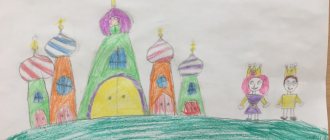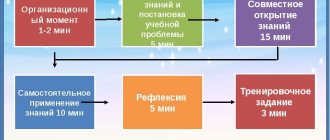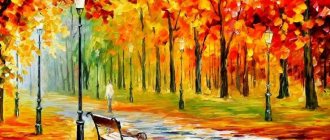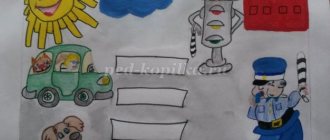Presentation for children 6–7 years old “Solar System”
Elena Babina
Presentation for children 6–7 years old “Solar System”
Relevance
Preschool age is a period of active entry into the period of learning about the world around us. Observing the celestial bodies has always been interesting to people at all times. Children are also attracted to this mysterious distance. Children show broad curiosity, ask questions regarding near and distant objects and phenomena, try to independently come up with explanations for natural phenomena, love to observe and experiment.
In order to preserve and develop curiosity in children , and enrich their experience of interacting with the world around them, I planned joint activities with objects and phenomena of space.
Goals:
Expand and form in preschool children the solar system and its planets .
Tasks:
— To form in children an idea of the solar system and planets ;
-Help to understand the sequence of planets as they move away from the sun ;
— Contribute to the development of cognitive interest;
-Expand vocabulary (star, solar system , planet, comet, meteorite)
.
Expected results of work on the topic “ Solar System ”
— development of cognitive interests, curiosity and motivation;
— formation of cognitive actions, formation of consciousness;
— development of imagination and creative activity;
— instilling in children a respectful attitude towards the work of other people;
- vocabulary expanded;
Description of practical significance
This presentation material will be useful to teachers of preschool educational institutions in the field of cognitive orientation of education for children 6-7 years old .
Collaborative activities between teachers and children
Area Cognition
Conversations with children:
" The sun is the source of life on Earth"
.Goal: to clarify
children’s knowledge about the sun , its shape;
explain what it consists of; What is space.” Purpose: to give children an idea of the planets of the solar system , the sun , stars, the first flight into space, to find out children’s knowledge on this issue ;
"Blue Planet - Earth"
.Goal: to explain to children what a telescope and outer space are, to show how beautiful our Earth is from space;
"The Moon is the Earth's satellite"
.Goal: to find out
children’s ideas about the Moon , expand knowledge about the lunar surface and atmosphere;
"Planets of the solar system "
Goal: expand
children's understanding of the planets of the solar system ;
"The first space explorers"
Goal: to tell children about animals that flew into space before humans;
“Who are astronauts?”
.Purpose: to introduce the biography of the first cosmonaut Yu. A. Gagarin; with the first woman cosmonaut V.V. Tereshkova to talk about the work of Russian cosmonauts in space these days.
Working on the theme “Space”
the preparatory group
children to form and expand their understanding of the solar system , constellations, meteorites, and to develop an interest in unknown facts from the history of space. The children learned to analyze existing facts, establish cause-and-effect relationships, and draw conclusions.
Presentation on the topic: “20 facts about the Moon.”
Presentation on the topic: “What do we know about the Moon?”
Performed:
Demidova E.G.
2019
20 little-known facts about the Moon that everyone will be interested to know
1. The moon appeared as a result of a collision.
The Moon was formed from the debris of the Earth.
The moon appeared as a result of a collision. Scientists believe that the Moon was formed from debris from the Earth and a space object the size of Mars after their collision.
2. 206 thousand 264 Moons.
The Moon was formed from the debris of the Earth.
The moon appeared as a result of a collision. Scientists believe that the Moon was formed from debris from the Earth and a space object the size of Mars after their collision.
3. People always see the same side of the Moon.
The Earth slows down the rotation of the Moon around its axis.
People always see the same side of the Moon. The Earth's gravitational field slows down the Moon's rotation around its axis. Therefore, the rotation of the Moon around its axis occurs in the same time as its rotation around the Earth.
4. The far side of the Moon.
The other side of the moon.
The far side of the Moon is more mountainous compared to the one visible from Earth. This is explained by the force of gravity of the Earth, which has led to a thinner crust on the side facing our planet.
5. Moon tree seeds.
400 trees growing on Earth were brought from the Moon.
More than 400 trees growing on Earth were brought from the Moon. The seeds from these trees were taken by the Apollo 14 crew in 1971, orbited the Moon, and returned to Earth.
6. Asteroid Cruithney.
A complete revolution around the planet takes 770 years.
The Earth may have other natural satellites. The Cruithney asteroid moves in orbital resonance with the Earth and completes a full revolution around the planet every 770 years.
7. Craters on the surface of the Moon.
Craters left by meteorites.
Craters on the surface of the Moon were left by meteorites 4.1 - 3.8 billion years ago. They are still visible only because, geologically, the Moon is not as active as the Earth.
8. There is water on the Moon.
There is frozen water in the shaded craters.
There is water on the moon. The Earth satellite has no atmosphere, but does have frozen water in shadowed craters and beneath the soil surface.
9. The moon is not a perfect ball.
The moon is egg-shaped.
The moon is not actually a perfect sphere. It is rather egg-shaped due to the influence of Earth's gravity. In addition, its center of mass is not in the center of the cosmic body, but approximately two kilometers away from the center.
10. Crater named...
Craters are named after scientists, artists, explorers, and astronauts.
The lunar craters were first named after famous scientists, artists and explorers, and later after the names of American and Russian cosmonauts.
11. Moonquakes.
Moonquakes are caused by the gravitational influence of the Earth.
On the Earth's satellite there are... moonquakes. They are caused by the gravitational influence of the Earth. Their epicenter is located several kilometers below the surface of the Moon.
12. Exosphere.
Helium, neon and argon.
The moon has an atmosphere called the exosphere. It consists of helium, neon and argon.
13. Dancing dust.
Dust rises due to electromagnetic forces.
There is dancing dust on the Moon. It hovers above the surface of the Moon (more intensely at sunrise or sunset). Dust particles rise upward due to electromagnetic forces.
14. The Earth's satellite is more like a planet.
Pluto and Charon.
The Earth's satellite is more like a planet. The Earth and Moon are a double planet system, similar to the Pluto + Charon system.
15. The moon causes the ebb and flow of the tides on Earth.
The moon influences the oceans of our planet.
The moon causes the ebb and flow of the tides on Earth. The Moon's gravitational pull affects our planet's oceans. The highest tides occur during a full or new moon.
16. The moon is moving away from the Earth.
The Earth is losing the Moon.
The Moon is moving further and further away from the Earth. Initially, the Earth's satellite was 22,000 kilometers from its surface, and now it is almost 400,000 kilometers away.
17. There are large daily temperature fluctuations on the Moon.
At the lunar equator, temperatures range from -173 at night to plus +127 degrees Celsius during the day.
There are very large temperature fluctuations on the Moon. In the area of the lunar equator, temperatures range from minus 173 at night to plus 127 degrees Celsius during the day.
18. Lunar day.
29.5 Earth days.
One lunar day is equal to 29.5 days on Earth. On the Moon, it takes 29.5 Earth days for the Sun to cross the entire sky.
19. "Ares I" and "Ares V".
New NASA rockets.
Men haven't landed on the moon in 41 years. However, NASA is working on new rockets, Ares I and Ares V, that will be able to carry payload to the Moon and back.
20. Progress.
Astronaut on the Moon.
Today, smartphones are much more powerful than the computers used to land the Apollo on the moon.
Program on the surrounding world “Green Path” for classes in preparation for school.
1)Target:
development in children of universal prerequisites for educational activity, cognitive processes and intellectual abilities; systematization and scientific correction of natural history ideas accumulated by children in preschool age.
Tasks:
Educational
- to form ideas about the flora and fauna, seasonal changes in nature, certain types of work and professions;
— clarify and systematize knowledge about natural phenomena;
— enrich active and passive vocabulary;
Developmental
- develop verbal and logical thinking, the ability to draw conclusions, justify your judgments;
- develop skills of self-control and self-esteem;
- develop the ability to understand a learning task and complete it independently;
- develop a sense of empathy and compassion for people around you;
- develop creativity and imagination;
— to develop general educational skills: the ability to work in a team, to bring the job started to completion, to work carefully and concentratedly.
Educational
- contribute to the education of hard work, kindness, responsiveness;
- contribute to the development of interest and love for the Motherland, nature, the ability to admire its beauty, treat plants and animals with care.
- formulate ethical standards and correct behavior.
2) Regulatory documents on the basis of which the program was developed:
Federal Law “On Education in the Russian Federation” No. 273-FZ dated December 29, 2012.
The concept of preschool education in the Educational System “School of Russia”;
SanPiN 2.4.1.3049-13;
Methodological recommendations for conducting classes in the main areas of cognitive activity of older preschoolers.
Order of the OU No. 246 dated October 1, 2014. “On the organization of paid additional educational services”
3) Information about the program:
The work program on the surrounding world was developed on the basis of the educational and methodological manual by A.A. Pleshakov “Green Path” and is intended for preparing children of senior preschool age and preparing for school. The program specifies the content of the subject topics of the educational standard, provides the distribution of training hours by sections of the course and the recommended sequence of studying topics and sections of the academic subject, taking into account interdisciplinary and intrasubject connections, the logic of the educational process, and the age characteristics of students.
4) Justification for choosing the program
The work program contributes to the preservation of a unified educational space, without hindering the creative initiative of the teacher, and provides ample opportunities for the implementation of various approaches to the construction of a curriculum, the formation of a system of knowledge, skills, methods of activity, the development and education of preschoolers. A distinctive feature of this program from existing ones is that preparation for school does not allow duplication of first-grade programs and focuses not on the level of knowledge, but on the development of the child’s potential capabilities, on his zone of proximal development. A special feature of school preparation is its integrated basis. The program not only aims to prepare the child for school, but is also developmental in nature, solving the problems of the general development of the future first-grader, his physical, social and mental functions necessary for systematic learning at school.
5) Information about changes made
No changes have been made to the sample program.
6) Information about the number of hours for which the work program is designed.
The program is based on 1 hour of study load per week (1 hour per week), throughout the entire academic year from October 1 to May 15 (30 hours).
Appendix 1 to the work program “Calendar-thematic plan” specifies the topics of each lesson and the dates of the lessons; main types of educational activities of students.
7) Forms of organization of the educational process
- group classes with children;
- individual consultations;
- activity-game;
- activity-travel;
- activity-research;
- activity-holiday;
- activity-performance;
- activity-competition;
- lesson-excursion;
- activity-competition.
- pair work
The assignments are focused on the use of group forms of learning. To complete this task, preschoolers must decide how they will act, distribute among themselves who will do what work, in what order or sequence, and how they will check the completion of the work. This type of task is very important, as it contributes to the formation of regulatory, communicative universal actions, provides the opportunity for each child to express his personal opinion, compare it with the opinions of others, figure out why I thought this way and my friend differently. Children learn different ways of receiving and processing information, “learning by teaching.”
 Educational technologies
Educational technologies
Standard pedagogical technologies are used in lessons:
developmental education (development of personality and its abilities)
differentiated training (creating optimal conditions for identifying inclinations, developing interests and abilities);
game training (ensuring personal and active character
acquisition of knowledge, skills, game methods of involvement in creative activities);
health-saving technologies (physical training sessions)
9) Types and forms of control
When mastering the course, initial and final diagnostics are provided, the purpose of which is to identify the level of mastery of the program. The results of a diagnostic examination of children are used to design the educational process. Test methods and diagnostic cards have been developed for this purpose. The selection of educational material is carried out taking into account the results of initial and intermediate diagnostics of children. At the end of the training course, a final diagnostic is carried out, in which the same test techniques are used, but the tasks in them are more complicated.
10) Planned level of training for preschoolers at the end of the school year
By the end of the school year, preschoolers will learn:
- basic rules of behavior in nature;
— the main features of the seasonal life of nature;
— about domestic animals (their benefits), about the life of wild animals;
— rules of safe behavior in the house and on the street; precautions when interacting with other people, household items, animals;
— about beauty in nature, art, everyday life, human relationships;
- about your good and bad habits, about the need for self-education.
- plants and animals of our area.
— safety rules when picking berries, medicinal plants, and mushrooms.
—
variety of birds and animals.
— safety rules when meeting and communicating with animals.
By the end of the school year, preschoolers will have the opportunity to learn:
- distinguish and name trees and shrubs;
- name mushrooms, distinguish between edible and poisonous mushrooms;
— follow the rules of behavior, avoiding dangerous situations;
- in case of danger, react correctly and seek help from others;
- show kindness to the people around you, acquaintances and strangers, without demanding anything in return;
- be a generous and honest person and value these qualities;
- see beauty in all its manifestations, strive for it;
- evaluate yourself and your actions, get rid of the bad and develop a positive image of your “I”.
- apply acquired knowledge and methods of activity to solve new cognitive problems; — show a cautious and prudent attitude towards potentially dangerous situations for humans, follow basic rules of road safety and safe behavior in the natural world; - show an interested and caring attitude towards the natural environment, observe the simplest rules of behavior in nature.
11)Information about the textbook
Pleshakov A.A. Green path. A textbook for preparing children for school. M.: Education. 2013
Interactive children's presentation “Journey into Space”
Author:
Yagovkina Marina Vladimirovna,
teacher,
highest qualification category
MADO kindergarten No. 126 in Tyumen
Journey into space
(integrated educational activities)
Program content:
- Practice the ability to restore the order of numbers in ascending order.
- Recognize familiar geometric shapes, make a figure from a geometric constructor according to a diagram.
- Test your ability to form a whole from parts and name each part.
- Fix the countdown, the composition of the numbers within 4.
- Continue to develop the ability to divide words into syllables, choose words with the same root, name the first letter in a word
- Expand your understanding of constellations and planets of the solar system.
- Develop logical thinking, imagination, and reasoning skills.
Materials:
- Ø Multimedia installation
- Ø Rocket diagram, geometric constructors (for each child);
- Ø Stars: 3 large with number houses, 12 small with numbers;
- Ø Tape recorder, star music, distress signal;
- Ø Planet Jupiter divided into 4 parts and two other cosmic bodies;
- Ø Star, star stickers
Educator: Hello, guys! Today we have guests, let's say hello to them. (Slide 2)
Today we will go on a journey with you. What can you go on a trip with? (Slide No. 3)
Children's answers: by train, by car, by bus...
Educator: I suggest you guess what we are going on.
Game “Add the letters in ascending order of numbers” (Slide No. 4)
I have the name of this transport here. (the teacher opens the box, and there are letters and numbers on magnets), for this we need to arrange all the numbers in ascending numerical order and we will find out what we will take on the journey.
The child puts the numbers in order and reads the word: ROCKET.
| 1 | 2 | 3 | 4 | 5 | 6 |
| R | A | TO | E | T | A |
Educator: Where can we go on a rocket?
Children's answers: to space, to the moon...
Educator: Today we will go on a journey on a rocket into space, we will make stops on various planets. Where is our rocket? Here it is (Slide No. 5).
What geometric shapes does our rocket consist of?
Children's answers: from a triangle, a rectangle, a circle
Educator: Let's go to the table and build the same rockets.
Children use their geometric construction set to build rockets.
Educator: Well done! Now it's time to hit the road. We begin launching the rocket: 10, 9, 8, 7, 6, 5, 4, 3, 2, 1. (Slide No. 6)
— Guys, the rocket won’t start. We forgot the key to start the rocket.
Graphic dictation:
8 cells right, 2 cells up, 4 cells right, 5 cells down, 4 cells left, 2 cells up, 4 cells left, 2 cells up, 4 cells left, 3 cells down, 1 cell left, 1 cell up, 1 cell left, 1 cell down, 1 cell left, 3 cells up, 1 cell left, 1 cell up.
- Whoever completed the task correctly received the key to start the rocket. (Slide No. 7)
And now that we have the key, let’s start the rocket again: 10, 9,8,7,6, 5, 4, 3, 2, 1, launch (Slide No. 8)
Cosmic music sounds (Slide No. 9)
- So we fly, we enter weightlessness.
Children move in different directions and fly.
Educator: Look out the windows, we are flying through different constellations:
- This is Ursa Major. Count how many stars are there in this constellation? (Slide No. 10)
Children: Seven.
Educator: This constellation is called Orion, count how many stars are in this constellation? (Slide No. 11)
Children: Eight.
Educator: This constellation is called Cassiopeia, count how many stars are in it? (Slide No. 12)
Children: Five.
All these constellations are available for observation in our country at any time of the year.
Educator: Our ship flew up to a cluster of stars. So many stars! What are these stars in size? (Slide No. 13)
Children: Big and small.
Educator: Let's collect the stars. Boys collect big stars, and girls collect small ones.
Children collect stars.
Educator: Well done, guys! Oh, these are not ordinary stars.
Big stars are houses for little stars. We need to distribute the stars among the houses.
Game "Number Houses"
Educator: Guys, are we flying further?
A distress signal is heard (Slide No. 14)
Educator: Guys, the planet Jupiter is asking for help. A meteorite hit the planet and it split into pieces. The parts scattered in space and mixed with other parts of cosmic bodies, comets and asteroids. Task: assemble a planet from 4 equally sized parts.
Children come to the table and together collect planets and find the desired planet.
Educator: Which of these planets is Jupiter?
Children's answers. (Slide No. 15)
Educator: How did you guess?
Children: Planet Jupiter broke into four parts.
Educator: What is the name of each part of the planet?
Children: one fourth (Slide No. 16)
Educator: Attention! We are descending to the nearest planet. We leave the ship. It wouldn't hurt to warm up a little.
Physical exercise “Let's be cosmonauts” (Slide No. 17)
One, two - there is a rocket. Children raise their hands up, Three, four - take off soon. spread their arms to the sides, To fly to the Sun they make a circle with their arms, Cosmonauts need a year But on the road we are not afraid, arms to the sides, bending the body, Each of us is an athlete. squatting, bending and unbending their arms. Flying over the Earth at the elbows, raising their arms up. Let's say hello to her. and wave
Educator: To go further on our journey, we need to make our way through the asteroid belt. (Slide No. 18)
We will be saved if we find the way correctly. We need to find extra words.
Game "Fourth wheel"
- 1. Space, astronaut, spacesuit, space (Slide No. 19)
- 2. Asterisk, stellar, star, asteroid (Slide No. 20)
- 3. Earth, earthlings, earthly, planetary. (Slide No. 21)
- 4. Lunatic, Moon, Lunar, crater (Slide No. 22)
Educator: Why is this word superfluous?
Children's answers
Educator: Guys, it’s time for us to return to Earth (Slide No. 23)
We returned from the flight
And they landed on Earth.
Our journey is over.
- Look, a star fell from the sky! (Slide No. 24)
They say that when a star falls, you can make a wish and it will definitely come true. Do you want to make a wish?
Children pass the star and make wishes.
Educator: I also want to make a wish: that you will always be as friendly, brave, smart, quick-witted as during our journey. And the star brought you little gifts: little stars - stickers. (Slide No. 25)
From the portal administration: Presented demo version for review. The full version will be in the multimedia album of the virtual exhibition, which each participant will receive.
Dear teachers and parents - participants of the exhibition!
On June 2, 2015, a solemn ceremony of awarding the winners of the regional methodological exhibition “Modern educational environment of kindergarten and family” took place at the information and exhibition complex of the Tyumen Regional Duma. Details >>>
From June 8 to June 10, 2015, teachers from Tyumen received certificates of exhibition participants and multimedia albums with the full version of the exhibition at the Grant Center for the Development of Creativity for Children and Youth at the address: Profsoyuznaya St., 52. tel. for inquiries: 685-321,
June 9, 2015 Diplomas, certificates and gifts were sent to the winners and participants of the Exhibition of the south of the Tyumen region, Yamal-Nenets Autonomous Okrug and Khanty-Mansi Autonomous Okrug-Yugra by registered parcel post to the address of the preschool educational institution. Details >>>
Share




